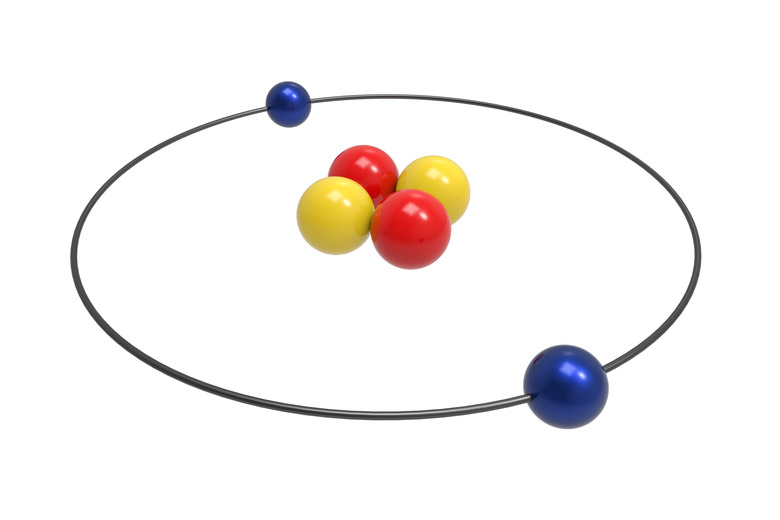How To Calculate Subatomic Particles
Subatomic particles are the individual protons, neutrons and electrons that make up the composition of atoms. With the help of the periodic table of elements, we can calculate how many subatomic particles there are in a given atom. Protons and neutrons are found within the nucleus of an atom while electrons surround the nucleus. The atomic mass or mass number is usually given as a decimal, due to the number of isotopes found and their relative abundance. Some known isotopes have a specific number of neutrons and are helpful when talking about radioactive materials.
Basic Subatomic Calculations
Step 1
Locate the atomic number of a given element on the periodic table; this is the number of protons found in the nucleus. It is usually listed above the element symbol. The identity of an element is based upon the number of protons found in the nucleus.
Step 2
Determine the number of electrons using the atomic number. An atom has a neutral charge, so the positive and negative charges are equal to each other. The atomic number is also the number of electrons.
Step 3
Calculate the number of neutrons by taking the mass number and subtracting the number of protons found in the nucleus. The mass number is usually located below the element symbol and represents how much an element would weigh in grams given a mole of the substance. Since the mass is centralized in the nucleus, only the protons and neutrons contribute to the mass number.
Isotope Calculations
Step 1
Locate the atomic number for the number of protons and electrons in the atom on the periodic table. The number of protons and electrons is equal to the atomic number.
Step 2
Calculate the number of neutrons by subtracting the atomic number from the isotope number. For example, Carbon 14 has an isotope mass of 14 and 6 protons, so the number of neutrons equals 8.
Step 3
Isotopes are elements that differ in mass. Since mass is derived from the nucleus and protons give the identity of an element, the number of neutrons differs in isotopes.
Things Needed
- Calculator
- Periodic table of elements
TL;DR (Too Long; Didn't Read)
Atoms are electrically neutral; the positive and negative charges are equal.
Cite This Article
MLA
Youngker, Andrew. "How To Calculate Subatomic Particles" sciencing.com, https://www.sciencing.com/calculate-subatomic-particles-8221603/. 13 March 2018.
APA
Youngker, Andrew. (2018, March 13). How To Calculate Subatomic Particles. sciencing.com. Retrieved from https://www.sciencing.com/calculate-subatomic-particles-8221603/
Chicago
Youngker, Andrew. How To Calculate Subatomic Particles last modified August 30, 2022. https://www.sciencing.com/calculate-subatomic-particles-8221603/
